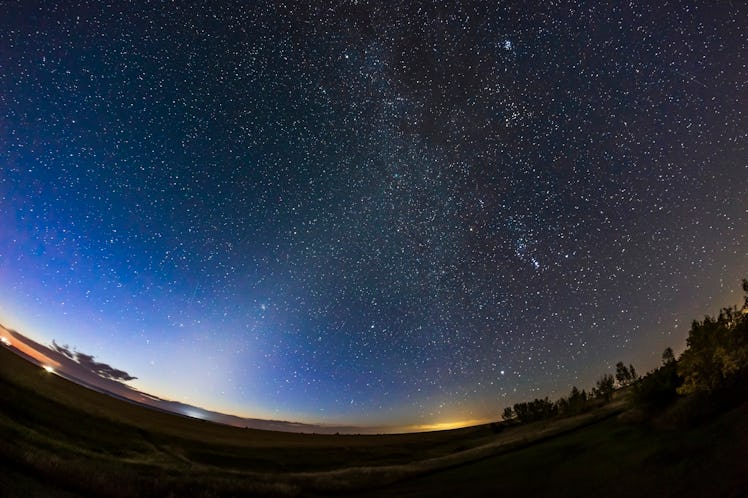How To See Zodiacal Light, The Coolest Event To Light Up The Dark Sky
There’s a bright show that hits our skies before the Sun even rises.

We could look up at the sky every night and find something new that showcases how incredible and awe-inspiring the vast world beyond our planet is. From Jupiter and Venus reaching conjunction to a stunning Worm Moon, every night offers a new stargazing wonder. But sometimes those events happen way closer to dawn than they do the sunset, like zodiacal light.
In simple terms, the zodiacal light, or false dawn, is a phenomenon that happens during early spring and late fall around sunset and sunrise, in which a hazy light can be seen extending from Earth into the sky in the shape of a pyramid or a triangle, according to TimeandDate.com. But the details on why this happens and what we’re really seeing are quite fascinating.
What Is the Zodiacal Light?
“The zodiacal light is a cone of eerie light in the sky just after evening twilight ends, or before it begins at dawn,” EarthSky shares. The phenomenon used to be attributed to Earth's upper atmosphere, but now it’s understood to be dust from the great beyond.
“Today we understand it as sunlight reflecting off dust grains that circle the sun in the inner solar system,” EarthSky explains. “These grains were once thought to be left over from the process that created our Earth and the other planets of our solar system 4.5 billion years ago.”
How to See the Zodiacal Light With Your Kids
The light is technically always there, but it’s easier to spot around the spring and fall equinoxes. The spring equinox is just weeks away — it’s on March 20, 2023 — so we’re just about in prime viewing time to view the zodiacal light this season.
“For both hemispheres, springtime is the best time to see the zodiacal light in the evening,” EarthSky notes. But when and where to look, and how easily you can see it — or if you can see it at all — depends on where you live.
“The zodiacal light can be extremely bright and easy to see from latitudes like those in the southern U.S.,” the outlet shares. “Meanwhile, skywatchers in the northern U.S. or Canada sometimes say, wistfully, that they’ve never seen it.”
If you’re hoping to see the evening zodiacal light that shines in the spring, from late February to early May, look to the sky in the hour after dusk ends. (Dusk is the period between sunset and nighttime.)
You’ll have your best chances if you’re in a dark sky location — away from city lights, below a sky where you can see with unobstructed views, and when the Moon isn’t too bright, so plan for a day that’s not around the Full Moon. You can continue to see the zodiacal lights for approximately an hour after dusk ends.
As for the pre-dawn zodiacal light in the Northern Hemisphere, the best time of year to see that is in Autumn, from August to November. Check back then for more.